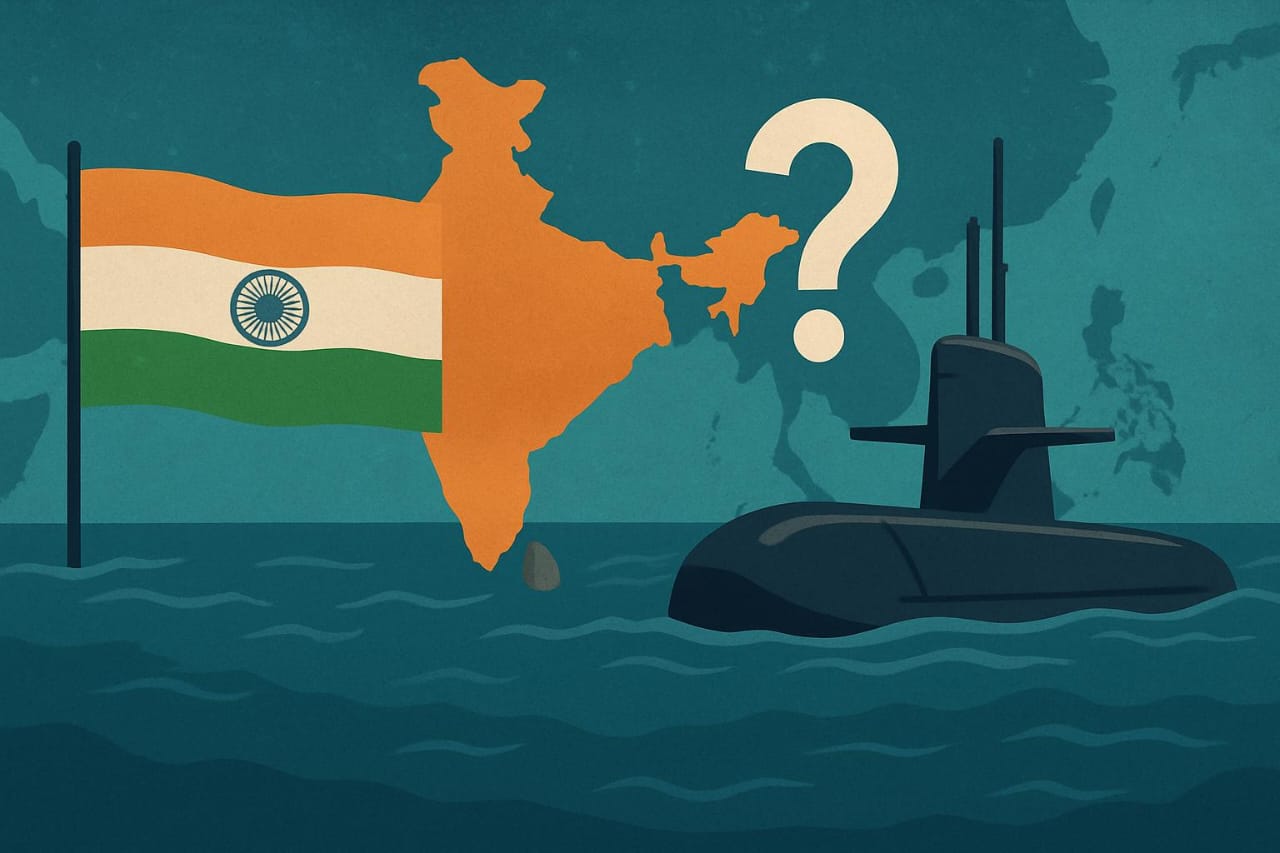Deterrence or Destabilization? Dissecting India’s Ambitions in the Indian Ocean

Deterrence or Destabilization? Dissecting India’s Ambitions in the Indian Ocean, by GSI
The tradition of basing one’s nuclear weapons at sea began during the Cold War, when the two Cold War arch-rivals; the United States and the Soviet Union, in an effort to secure their nuclear weapons from a nuclear first strike, turned to the sea. While New Delhi also looks forward to following in this tradition and sees strategic utility in maintaining nuclear weapons undersea to bolster its second-strike capability, the contemporary dynamics of the Indian Ocean region differ markedly.
Nevertheless, as New Delhi makes efforts to strengthen its undersea nuclear capabilities, while also pursuing rapid conventional militarisation of the Indian Ocean to posture itself as the ‘net security provider’ in the region, there remains a strong possibility that these activities may instead hold a ‘destabilizing potential’ for the region.
Nuclear survivability and undersea deterrence have been among the core priorities of New Delhi. While India’s 1998 Draft Nuclear Doctrine explicitly emphasized over achieving a credible minimum deterrent grounded in a nuclear triad, the endeavour has also been reinforced by subsequent maritime doctrines. From the Freedom of Use of Seas: Indian Maritime Military Strategy (2004) and the Indian Maritime Doctrine (2009) and the Indian Maritime Military Strategy (2015), all underscored the strategic significance of a resilient sea leg. While the 2004 and 2009 doctrines designated the northern Indian Ocean Region (IOR) as India’s primary maritime focus, the 2009 doctrine, however, also linked India’s naval expansion to its national prestige and economic utility.
Furthermore, the 2015 strategy markedly broadened the Indian Navy’s operational scope within the Indian Ocean by incorporating the Red Sea, East African littorals, Cape of Good Hope, and critical chokepoints like the Strait of Malacca and Singapore into India’s expanded ‘primary areas’ of interest.
India achieved its nuclear triad in 2016 as it commissioned the nuclear-powered ballistic missile submarine (SSBN); the INS Arihant into the Indian Navy. As of now, Im addition to the INS Arihant, New Delhi’s sea-based nuclear deterrent also includes the INS Arighat which was inducted into the Indian Navy in 2024. Reportedly, the INS Arighat is a relatively advanced SSBN, possessing an increased stealth, endurance, and missile capacity. Operationally, the Indian Navy fields the K-15 Sagarika Submarine Launched Ballistic Missile (SLBM) and the K-4 SLBM. While the K-15 has a range of 750 km, the K-4, on the other hand has extensive range of almost 3,500 km. Furthermore, by 2025, New Delhi also plans to induct the INS Aridhaman, which is the S-4 variant of the INS Arihant; whereas it is also developing the next-generation S5 variant of the Arihant-class submarines.
In India’s immediate neighbourhood, the deployment of SSBNs and SLBMs are particularly a cause of concern for Pakistan. It could potentially lead Islamabad into bolstering its own second-strike capability, thereby triggering the risk of arms race in the region. In addition to this, by virtue of nuclear-powered submarines’ ability to remain submerged for very extensive durations and remain undetected, these vessels also assist in functions such as covert monitoring of movements of other under-sea vessels, collection of electronic signals, and the conduction of surveillance operations. This facet too, may add to Pakistan’s threat perception vis-à-vis Indian undersea capabilities, and could also prompt Islamabad to look toward enhancing its maritime domain awareness.
Another risk involved with SSBNs pertains to the inherent complexity and difficulties in maintaining a secure and reliable command and control (C2C) over dispersed nuclear-armed submarines. This increases the risk of miscommunication, which may lead to unauthorized launches or accidental escalation, particularly during times of crisis. Hence, undersea nuclearization poses grave challenges such as continuous and secure communication with submerged submarines, verification of the legitimacy of launch orders, and prevention of accidental or unauthorized launches. Hence, the risk of crisis escalation at sea increases dramatically.
Hence, while New Delhi may frame its sea-based nuclear deterrent as a strategic necessity, however its efforts of rapid nonconventional expansion and modernisation, coupled with conventional militarization and regional assertiveness may suggest otherwise.
On the other hand, on the conventional front as well, New Delhi is undertaking rapid militarization efforts in the Indian Ocean. In the past few years, it has launched a number of initiatives that seek to enhance its sea-based conventional capabilities. For instance, New Delhi plans to induct up to 10 domestically produced warships, including the INS Surat, this year. This induction shall be made under Project 15B.
Additionally, New Delhi also plans to induct the stealth frigate INS Nilgiri under Project 17A and the Scorpene-class submarine INS Vagsheer. Simultaneously, New Delhi is also pursuing foreign procurements including naval versions of Rafale jets, anti-submarine torpedoes, and the sea-guardian variants of MQ-9B Predator drones which are capable of conducting anti-submarine warfare. Under Project 75(I), India is also looking to engage and collaborate with Germany-based ThyssenKrupp Marine Systems for the purchase-cum-development of six diesel-electric submarines by the 2030s.
Most recently, in order to bolster its Underwater Domain Awareness, New Delhi, along with Washington launched the Autonomous Systems Industry Alliance (ASIA) initiative. This initiative is also expected to expedite joint production of surveillance technologies and to enable data-sharing on undersea activities in the Indian Ocean between India and the U.S. This initiative may also assist New Delhi in monitoring vital sea lines of communication and other maritime assets. Collectively, all such initiatives and planned acquisitions indicate that New Delhi’s posturing in the Indian Ocean is not merely deterrence-oriented, but is rather capability-driven.
Hence, in the light of the mentioned above details, it can be concluded that India’s fast-growing undersea nuclear capabilities, coupled with its conventional militarisation of the Indian ocean, introduces the risks of destabilization to the already fragile deterrence equation in the region.
For a region like South Asia, which is already shrouded in historical animosities, border contiguities, and conventional asymmetries, wherein, confidence building measures are nearly absent, and military confrontations are rather rampant, such developments are likely to further strain the existing strategic balance rather than secure it. Hence, as New Delhi moves toward deepening its naval nuclear ambitions under the pretext of survivability and deterrence, the South Asian region, instead appears to be moving toward a future shaped less by restraint and more by competition, uncertainty, and heightened risks of escalation—especially at sea.



